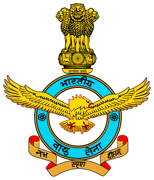About | Indian Air Force (IAF) , All INDIA Check here latest notification
The Indian Air Force: Guardians of the Skies
The Indian Air Force (IAF), one of the most formidable aerial defense forces in the world, stands as a symbol of India's strength, resilience, and technological prowess. Established with the primary mission of safeguarding Indian airspace and conducting aerial warfare, the IAF has played a pivotal role in the nation's defense and disaster relief efforts. This blog explores the history, capabilities, and contributions of the Indian Air Force, highlighting its crucial role in ensuring national security.
A Brief History
The Indian Air Force was officially established on October 8, 1932, during the British colonial period, as an auxiliary force. The first squadron, No. 1 Squadron, was formed in 1933 and consisted of just four Westland Wapiti aircraft. Over the years, the IAF expanded its fleet and capabilities, participating actively in World War II and supporting the British Indian Army.
Post-independence, the IAF underwent significant modernization and expansion. It played a decisive role in several key conflicts, including the Indo-Pakistani Wars of 1947, 1965, and 1971, as well as the Kargil War in 1999. Each of these engagements demonstrated the IAF's strategic importance and capability in safeguarding India's sovereignty.
Capabilities and Assets
The Indian Air Force is renowned for its state-of-the-art aircraft, advanced technology, and highly trained personnel. The IAF's fleet includes a diverse range of aircraft, from multirole fighters like the Sukhoi Su-30MKI and Rafale, to transport aircraft such as the C-17 Globemaster III and C-130J Super Hercules. The IAF also operates a variety of helicopters, unmanned aerial vehicles (UAVs), and advanced radar systems.
In addition to its combat and transport roles, the IAF has a robust aerial surveillance and reconnaissance capability. The induction of cutting-edge systems like the Airborne Early Warning and Control (AEW&C) system has significantly enhanced its operational reach and effectiveness.
Role and Responsibilities
The primary mission of the Indian Air Force is to secure Indian airspace and conduct aerial operations during armed conflicts. However, its role extends far beyond conventional warfare. The IAF is a crucial player in humanitarian assistance and disaster relief operations, often providing aid and support in the wake of natural disasters both within India and abroad. It has also been involved in evacuation operations, such as Operation Rahat in 2013, where it airlifted thousands of stranded people from flood-affected areas in Uttarakhand.
Moreover, the IAF actively participates in international peacekeeping missions and joint exercises with other nations, enhancing its strategic partnerships and operational readiness. Its involvement in missions like Operation Cactus in the Maldives and various United Nations peacekeeping operations highlights its versatility and commitment to global security.
Training and Innovation
The Indian Air Force is committed to continuous training and innovation. The prestigious Air Force Academy in Hyderabad, along with various other training institutions, ensures that IAF personnel are equipped with the necessary skills and knowledge to operate in complex environments. The IAF also invests heavily in research and development, collaborating with institutions like the Defence Research and Development Organisation (DRDO) to develop indigenous technologies and systems.
Future Prospects
Looking ahead, the Indian Air Force is poised for further modernization and expansion. Plans for acquiring next-generation fighter aircraft, advanced missile systems, and integrating artificial intelligence in operations underscore its commitment to maintaining a cutting-edge aerial defense force. The IAF is also exploring the potential of space-based assets, reflecting the increasing importance of space in modern warfare.
Conclusion
The Indian Air Force, with its rich history and impressive capabilities, stands as a pillar of India's defense architecture. It embodies the spirit of valor, excellence, and innovation, safeguarding the nation's skies and contributing to global peace and stability. As the IAF continues to evolve and adapt to new challenges, it remains a symbol of national pride and a guardian of India's air sovereignty.

